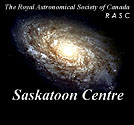 |

Sketching Jupiter Events and the GC Observing Challenge
Richard Huziak <huziak@SEDSYSTEMS.CA>
Posted on the RASClist, Thu, 17 Apr 2003
Several people have responded to me either on this list or privately by email to talk about the sketches I have posted at:
http://duke.usask.ca/~rasc/The_Great_Canadian_Observing_Challenge.html
The sketches are up on the site due to 2 factors. One is the Challenge. The other is my great belief that if you are (call yourself) a visual observer, then you should be sketching at least some of the stuff you are observing, or as a minimum, keep a detailed log book of what you are observing and what you see. Indeed, the logbook is essential if you are doing an amateur science program. However, sketching, even for fun, has great personal benefits - and you do not have to be Michaelangelo to try it. The bottom line is that IF you have to commit the drawing of the object to paper, you have to decide exactly where everything is in the image you are seeing, and decide what details are 'real' and which are likely not. This *really* helps you develop your observing skills, and those who are regular sketches often see far more at the eyepiece than those who don't. If you have to sit on one object for 15 or 20 minutes to finish your sketch, then you are spending a good sum of time looking at the finest details in the eyepiece. This is observing! Trust what you see - sketch it, then compare to photos later. You will be surprised at how good your eyes really are. Take time to observe and enjoy each object for ALL that it is worth - there is so much detail that is simply glanced over.
One of my inspirations for checking out every inch of detail is the old Rev. T. Webb two-volume books (1 - Planets, 2- The Stars) Dover Publishers - pink and blue paperback covers. When I read the descriptions of the objects that the astronomers were seeing in the 17th through 19th centuries, I am awe-struck by their skills and talents with FAR INFERIOR scopes than our worst of today! They were just good observers! (And of course, skies were BLACK at night). But the point is that there is so much to see - don't just skim over it.